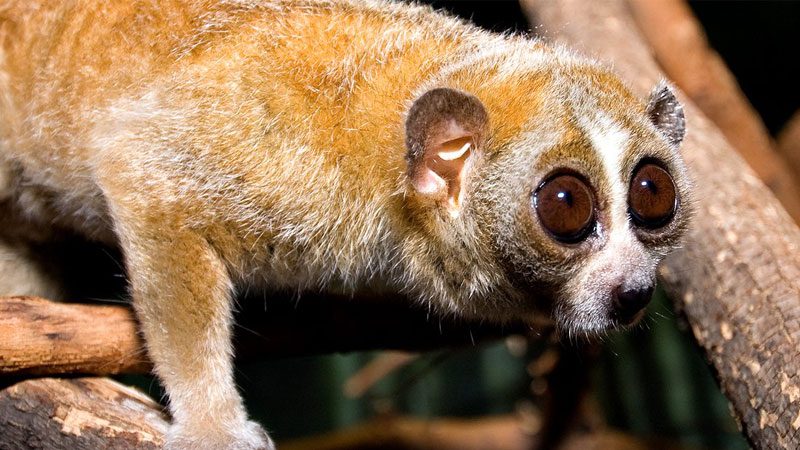Welcome to Lincoln Park Zoo’s new web app! Share your feedback

Pygmy Slow Loris
Regenstein Small Mammal-Reptile House
Did You Know?
- These prosimians secrete a substance from glands on the inside of their elbows, which mixes with their saliva to create venom. Slow lorises are the only primates with a venomous bite, which they use to defend themselves against rivals and predators. They can also emit a strong odor as a warning.
- They have extra vascular bundles in their arms and legs, which allow blood to flow through their extremities, preventing the paresthesia (that pins-and-needles tingling) caused by poor circulation.
- Pygmy slow lorises are one of the only primate species that go into torpor, an abbreviated type of hibernation that happens between October and April when food is scarce.
Don’t See the Animals?
Why aren’t animals visible at all times? To promote positive animal welfare, we provide animals with choices. They can choose to spend time in areas that are out of public view.

Take an Animal Home with You
Overview
Scientific Name: Nycticebus pygmaeus
Class: Mammals
Diet: Soft fruits and gums, tender shoots, and other plant and animal material
Range: Cambodia, Laos, Vietnam, and southernmost China
Endangered Status: Endangered
More Information
At around 8–9 inches long and just 1 pound in weight, pygmy slow lorises are most easily identified by their huge brown eyes, which help them spot food in the dark. Their short reddish-brown-and-gray coat varies from individual to individual. They have opposable thumbs, along with strong hands and feet that help them climb trees. They have a very short tail.
Pygmy slow lorises are solitary and nocturnal and stay mostly in trees. When they sleep, they curl up into a ball with their head tucked under their arms to keep warm, and as a form of camouflage. When awake, they are in almost constant motion, moving more quickly than other loris species. Males mate with several females each season, with gestation lasting a little over six months. Infants cling to their mother’s bellies, but females will also “park” their young on a branch while they forage for food. Females reach sexual maturity from 9–16 months and males do so at 18–20 months of age.
